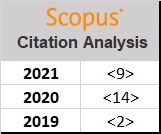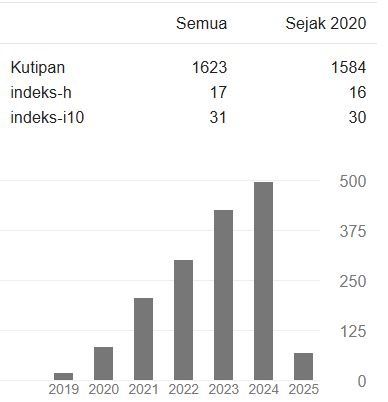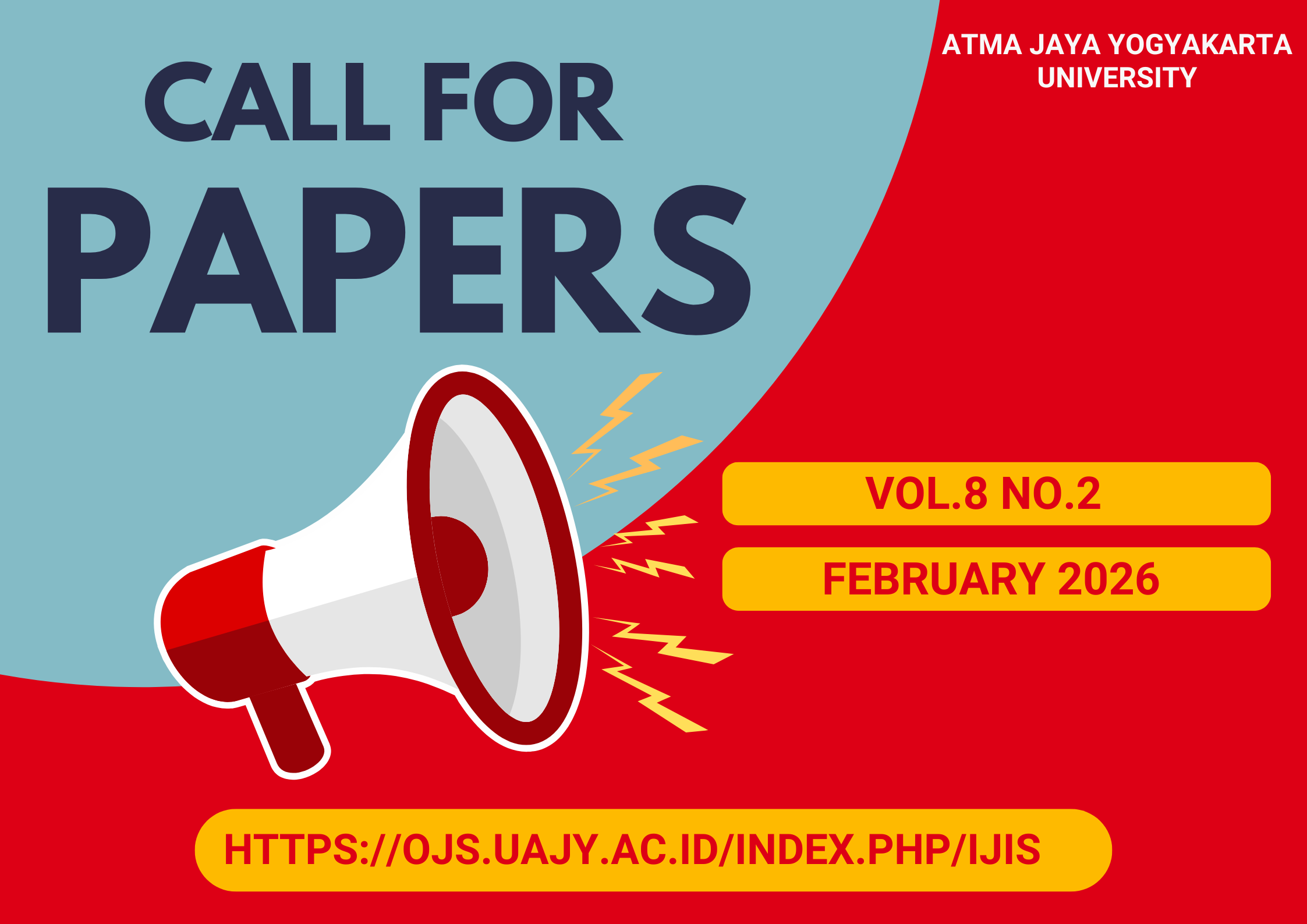Push Pull Mooring dan Pyschological Ownership terhadap Perilaku Beralih Pengguna Instant Messaging
DOI:
https://doi.org/10.24002/ijis.v2i1.2013Keywords:
Mobile Instant Messaging, perilaku beralih, Push Pull Mooring, Psychological OwnershipAbstract
Hasil survei tentang perilaku pengguna Mobile Instant Messaging (MIM) di Indonesia menjelaskan bahwa terjadi arus migrasi pengguna MIM. Perilaku beralih mengakibatkan penurunan pengguna dan profitabilitas layanan pada MIM yang ditinggalkan. Untuk itu diperlukan sebuah pemahaman tentang faktor-faktor yang mempengaruhi individu yang beralih. Penelitian ini bertujuan untuk mengetahui efek pendorong, penarik, serta penambat terhadap niat dan perilaku beralih pengguna MIM. Kepemilikan psikologis sebagai anteseden yang mempengaruhi faktor penghambat. Dalam penelitian ini, Push Pull Mooring digunakan sebagai kerangka untuk mengevaluasi hubungan variabel. Pengujian menggunakan Structural Equation Modelling jenis PLS (SEM-PLS). Hasil penelitian menjelaskan bahwa Dissatisfaction terbukti mendorong individu untuk beralih MIM sedangkan Low System Quality bukan faktor pendorong beralih MIM. Alternative Attractiveness dan Subjective Norm terbukti sebagai penarik pada MIM alternatif. Commitment Affective yang sebelumnya diyakini sebagai faktor penambat beralih, tidak terbukti. Hasil evaluasi ini dapat menjadi acuan penyedia layanan MIM dalam mengembangkan fungsionalitas layanan sebagai upaya mempertahankan pengguna serta menarik pengguna baru.References
Emarketer, “eMarketer Release Latest Estimates for Worldwide Messaging App Usage,” 2017. .
A. D. Ahad and S. M. A. Lim, “Convenience or Nuisance?: The ‘WhatsApp’ Dilemma,” Procedia - Soc. Behav. Sci., vol. 155, no. October, pp. 189–196, Nov. 2014.
A. C. Y. Hou, “Switching motivations on instant messaging: A study based on two factor theory,” in Communications in Computer and Information Science, 2015.
C. H. Lien and Y. Cao, “Examining WeChat users’ motivations, trust, attitudes, and positive word-of-mouth: Evidence from China,” Comput. Human Behav., vol. 41, pp. 104–111, 2014.
T. Correa, A. W. Hinsley, and H. G. de Zúñiga, “Who interacts on the Web?: The intersection of users’ personality and social media use,” Comput. Human Behav., 2010.
T. Zhou and Y. Lu, “Examining mobile instant messaging user loyalty from the perspectives of network externalities and flow experience,” Comput. Human Behav., vol. 27, no. 2, pp. 883–889, 2011.
A. T. Bhaskoro, “Nielsen: BlackBerry Messenger Masih Jadi Aplikasi Messaging Paling Favorit di Indonesia,” 2014. .
JajakPendapat, “Indonesia Messager Trend 2016,” 2016. .
F. Zebua, “Laporan DailySocial: Survey Instant Messaging 2017.,” 2017. .
I. C. Chang, C. C. Liu, and K. Chen, “The push, pull and mooring effects in virtual migration for social networking sites,” Inf. Syst. J., vol. 24, no. 4, pp. 323–346, 2014.
H. S. Bansal, S. F. Taylor, and Y. S. James, “‘Migrating’ to new service providers: Toward a unifying framework of consumers’ switching behaviors,” Journal of the Academy of Marketing Science, vol. 33, no. 1. pp. 96–115, 2005.
C. Zengyan, Y. Yinping, and J. Lim, “Cyber migration: An empirical investigation on factors that affect users? Switch intentions in social networking sites,” in Proceedings of the 42nd Annual Hawaii International Conference on System Sciences, HICSS, 2009, pp. 1–11.
A. Bhattacherjee and S. C. Park, “Why end-users move to the cloud: A migration-theoretic analysis,” Eur. J. Inf. Syst., vol. 23, no. 3, pp. 357–372, 2014.
X. Peng, Y. (Chris) Zhao, and Q. Zhu, “Investigating user switching intention for mobile instant messaging application: Taking WeChat as an example,” Comput. Human Behav., vol. 64, pp. 206–216, 2016.
A. Hou, “the Effects of Push-Pull-Mooring on the Switching Model for Social,” Pacific Asia Conf. Inf. Syst. 2014 Proc., pp. 1–7, 2014.
A. Madahi and I. Sukati, “An empirical study of Malaysian consumers’ channel-switching intention: Using theory of planned behaviour,” Glob. Bus. Rev., vol. 17, no. 3, pp. 489–523, 2016.
C. Ye and R. Potter, “The Role of Habit in Post-Adoption Switching of Personal Information Technologies : A Push , Pull and Mooring Model,” Inf. Syst., vol. 28, no. 1, pp. 585–610, 2007.
X. Wu, X.-L. Shen, Y. Sun, X. Zhang, S. Chen, and D. Liu, “Understanding users’ switching behavior of mobile instant messaging applications: An empirical study from the perspective of push-pull-mooring framework,” Comput. Human Behav., vol. 75, pp. 727–738, 2017.
J. L. Pierce, T. Kostova, and K. T. Dirks, “Toward a theory of psychological ownership in organizations,” Acad. Manag. Rev., 2001.
Q. Zhao, C. Der Chen, and J. L. Wang, “The effects of psychological ownership and TAM on social media loyalty: An integrated model,” Telemat. Informatics, 2016.
G. Sinclair and J. Tinson, “Psychological ownership and music streaming consumption,” J. Bus. Res., vol. 71, pp. 1–9, Feb. 2017.
J. Cohen, “Statistical Power Analysis,” in International Encyclopedia of Education, Elsevier, 1992, pp. 436–443.
A. Willy and J. Hartono, Partial Least Square (PLS) Alternatif Structural Equation Modeling (SEM) dalam Penelitian Bisnis. Yogyakarta: ANDI, 2015.
C. C. Lee, “Sample size estimation using Krejcie and Morgan and Cohen statistical power analysis: A comparison,” J. Penyelid. IPBL, 2006.
S. Haryono, Metode SEM untuk Penelitian Manajemen dengan AMOS LISREL PLS. Jakarta: Luxima Metro Media, 2017.
J. K. Hsieh, Y. C. Hsieh, H. C. Chiu, and Y. C. Feng, “Post-adoption switching behavior for online service substitutes: A perspective of the push-pull-mooring framework,” Comput. Human Behav., vol. 28, no. 5, pp. 1912–1920, 2012.
Downloads
Published
How to Cite
Issue
Section
License
Indonesian Journal of Information Systems as journal publisher holds copyright of papers published in this journal. Authors transfer the copyright of their journal by filling Copyright Transfer Form and send it to Indonesian Journal of Information Systems.

Indonesian Journal of Information Systems is licensed under a Creative Commons Attribution-NonCommercial 4.0 International License.

















